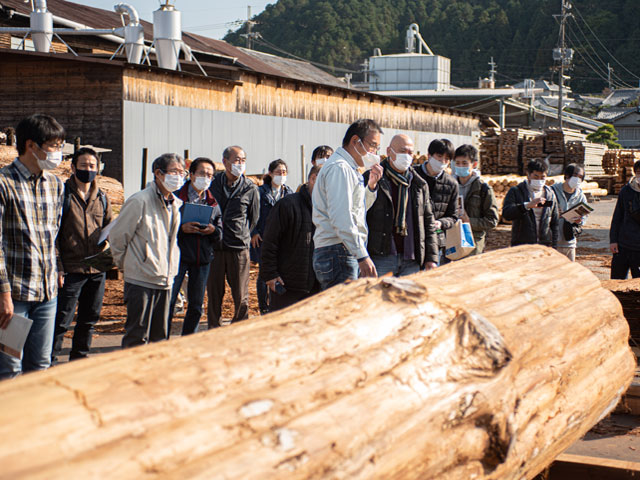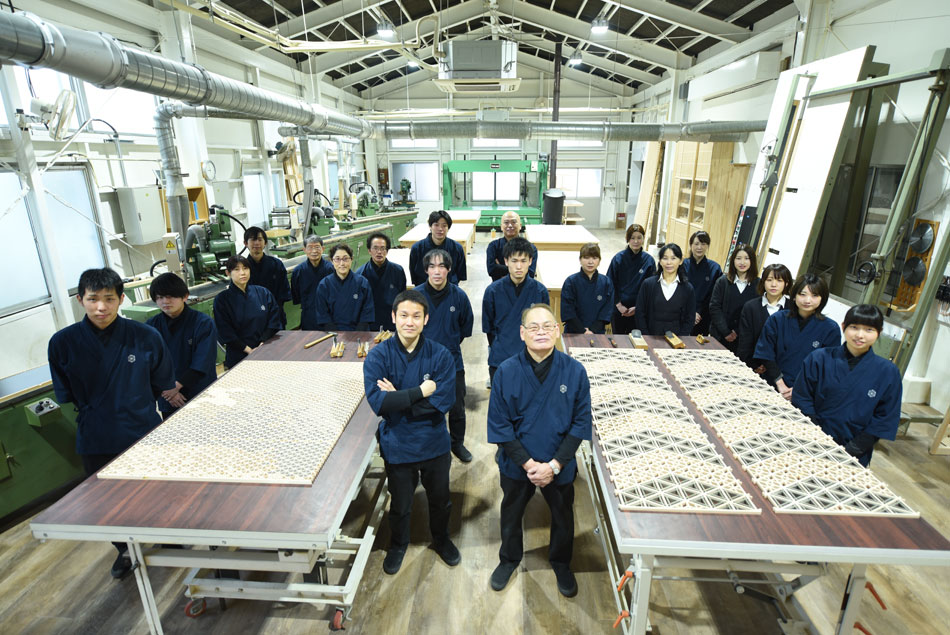Global Warming Countermeasures
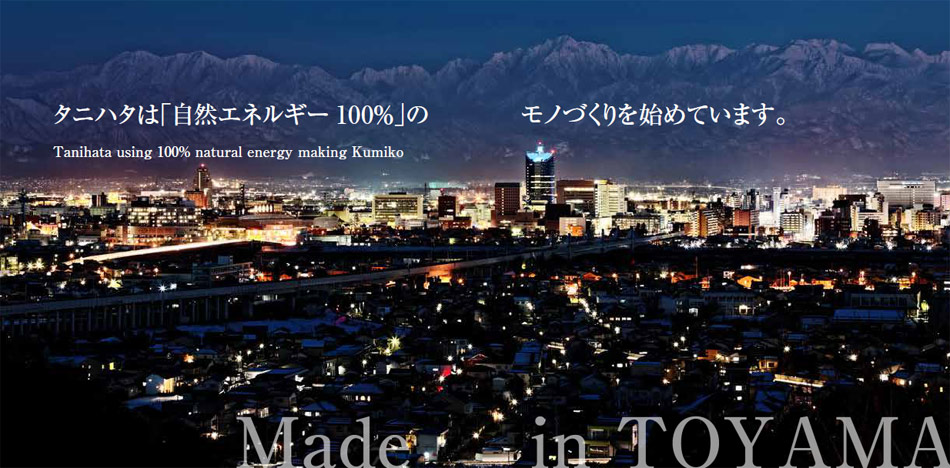
Remembering huge earthquake and nuclear disaster in 2011, it was a turning point to reconsider fundamentally our relationship with society and energy. We had to be suspicious about conventional industrial structure consuming tremendous amount of energy.
Dealing with relatively small wood pieces, Kumiko crafts uses machines and energy resources like electricity and coal oil. What should we do to manufacture without placing a load on environment? Our answer is to change over from fossil energy like oils polluting air to renewable energy like sunlight, water and biomass using natural resource. What we can do now is the manufacture which can avoid waste and coexist with nature.
To realize decarbonation and promote counter plans against global warming,
To preserve beautiful environment and leave better world for children in the future,
Tanihata holds up 4 guidelines to manage a business without carbons.
1. Electricity we use is 100% natural energy.
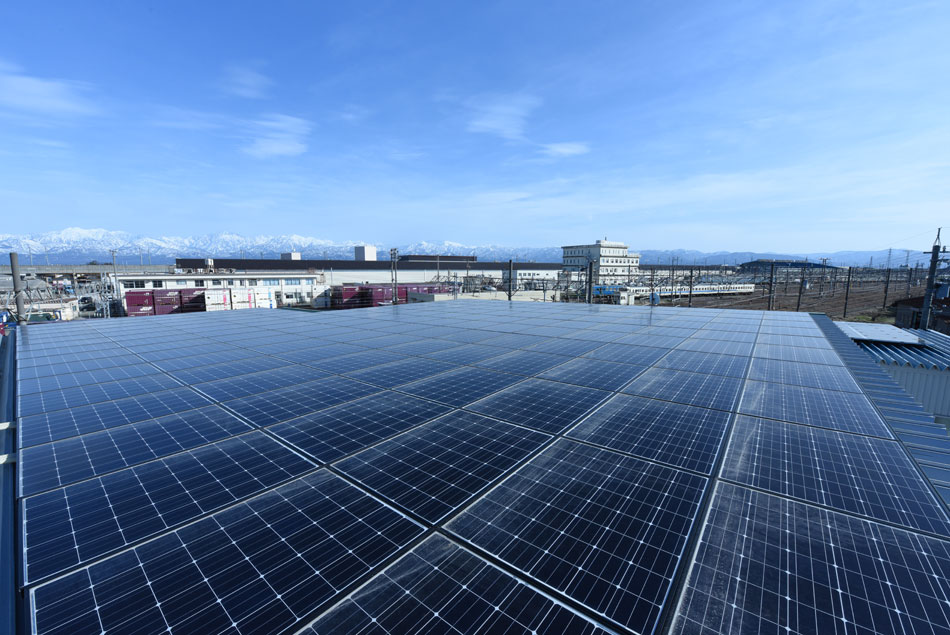
Solar power
In 2015, we put a 30kW solar panel on the roof of our factory to operate solar power generation. The amount of CO2 we could reduce in six years was about 100 tons. This is 36 times of the amount of CO2 that one family in Japan discharge in a year and can convert into 45,000 litters as coal oil. This electricity was sold to a power company at first. In 2021, we put a 20 kW solar panel anew to get power directly for Kumiko manufacturing in our factory.
Hydroelectric power
“Green electricity” without CO2 emission from water-power generation is provided to supply a shortage of solar power. Toyama prefecture is surrounded by 3,000 meters high mountains and development of hydroelectric power generation has been conducted from 19th century. We make the most of such local character to manufacturing.
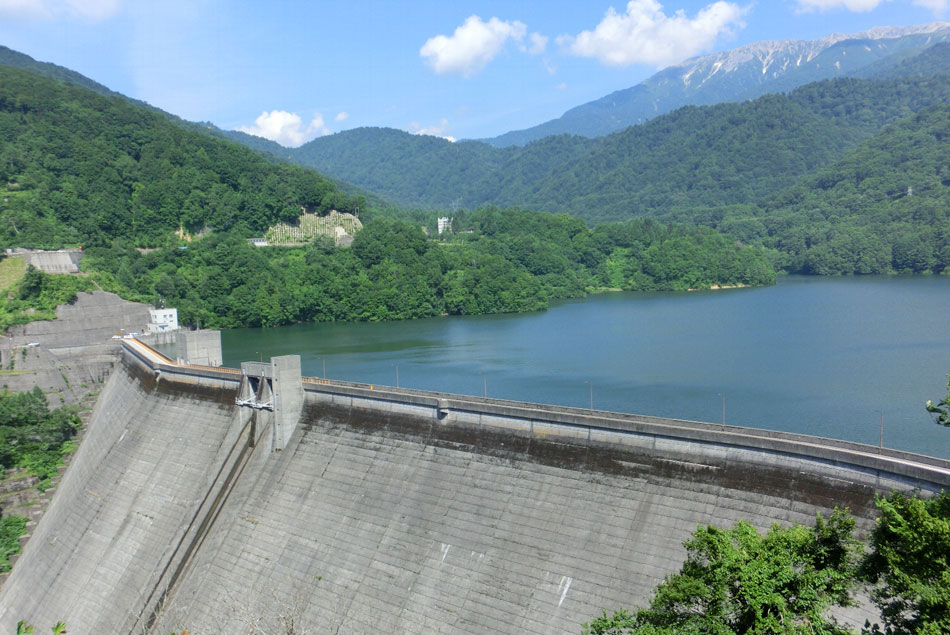
Visualization of energy consumption
We installed power demand monitor system to check energy consumption in real time. It rings the alarm when the amount of energy is more than what is set before. By this system, it turned out that dust collector used electricity most. It was more than 40% of whole energy use. A significant power reduction was achieved after taking measures on it.
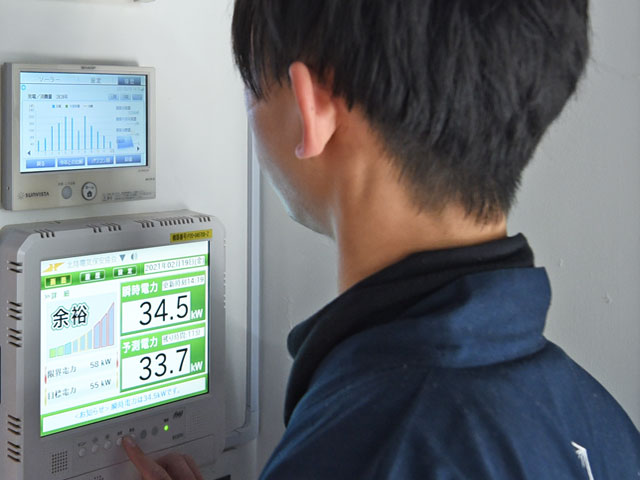
To minimize environmental burden
We switched lights to LED in factory. Within 2021, gasoline powered vehicles and forklifts will be changed into electric ones to be supplied by inhouse generated electricity.
2. To make full use of woods
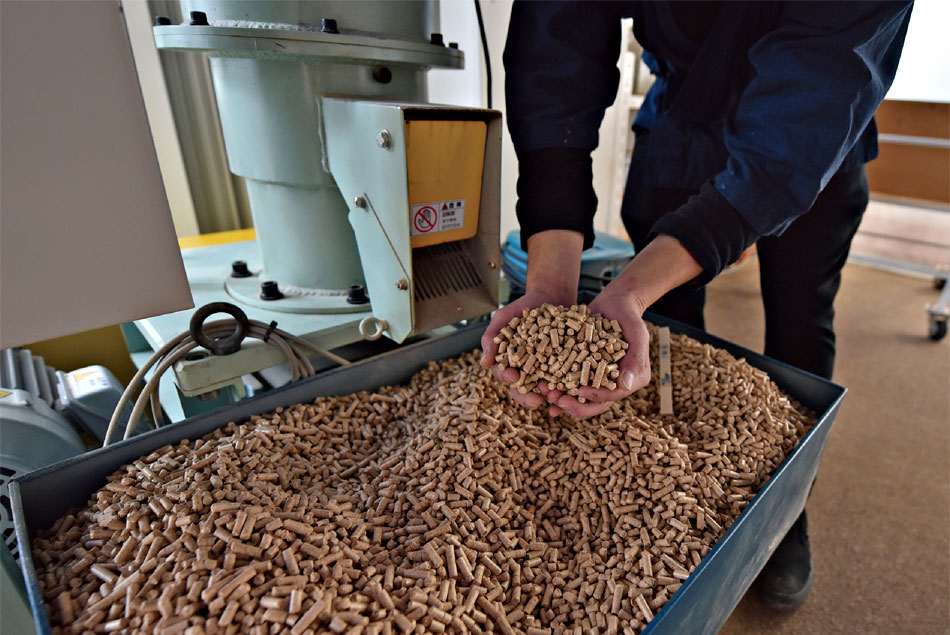
From time immemorial, people have burnt woods to keep warm, but it didn’t make CO2 concentration on earth higher. That is because woods take in CO2 during the process of their growth and it goes back to the atmosphere again. The same can be said when woods rot.
This is the idea of carbon-neutral.
On the other hand, when fossil fuel like oil is burnt and CO2 is discharged, it makes CO2 concentration on earth higher because it ever comes out if fossil fuel would stay in the ground. Based on this idea, Tanihata will continue to be revitalizing forests and helped by woods.
Heating in winter runs by biomass.
According to the woodworking process, some kinds of wood waste like cutting chips and sawdust are produced. Collecting them through dust collector and air ducts, we send them to pelletizer to make pellets by compressing into small grains. We use them for a pellet stove in the factory.
We use wood waste for a large wood-burning stove made in Kamaishi, Iwate prefecture, which is famous as a birthplace of Japan ese ironmaking. This stove can be stuffed with woods in the upper tank and we don’t have to stop working.
*biogenic renewable resource
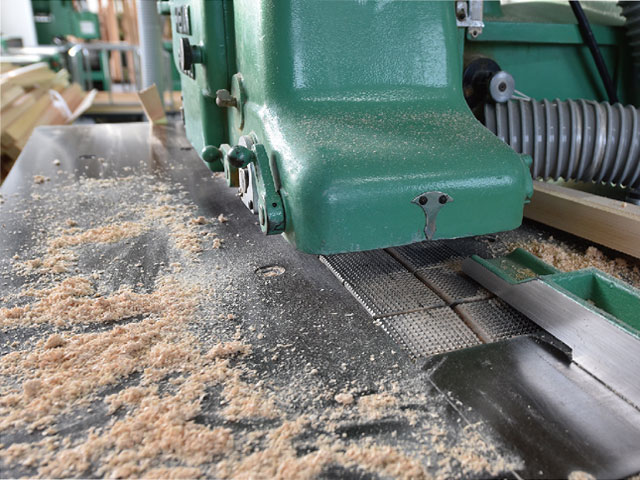
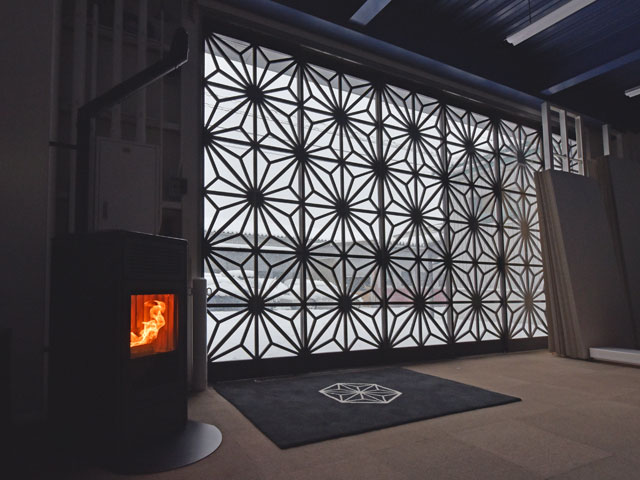
To aim for further efficiency
We continue energy-saving activity by putting circulator
in the factory to increase efficiency of air conditioner.

Furthermore, glass plates are set in part of northern wall of the factory to take natural light as a part of lighting.
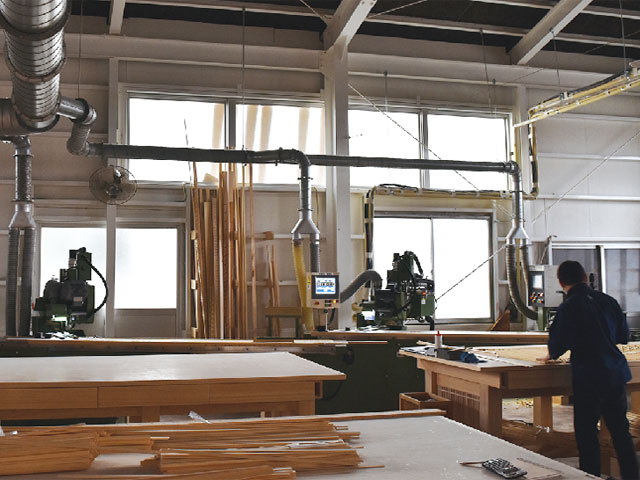
We confirmed with a lux meter that the factory has become much
brighter thanks to natural light
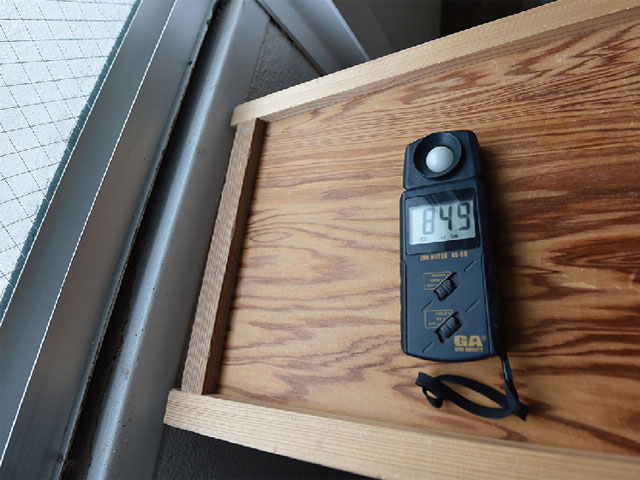
3. All employees are careful of environment and take action.

Preservation and improvement of artisans’ skills
Tanihata values hand work using carpenters’ tools without machines as well. Not to rely on only electricity, artisans’ technique will improve by handwork. To keep transmission of artisans ‘ skills, there is no retirement age for craftsmen. We are a small company
with 20 employees and we have 3 artisans over 70. Retirement time is on each worker and we will always keep company worthwhile to work.
By improving technique and design and heightening awareness for manufacturing companywide, we will enhance product age and create products to have been treated for 100 years.
Eco-friendly uniform
Material for Tanihata’s uniform is made to order in Shiga prefecture ‘s traditional industry, Takashima Chidimi (Crepe). Chidimi cloth has special features that are airy, sweat-absorbing and quick-drying by its embossed wrinkles on the surface. It is suitable for hot
and humid summer in Japan to achieve a work environment without relying on air conditioner. More and more customers come to visit us from overseas and we are particular about design to proudly welcome as Japanese craftsmen. Not only Kumiko, we intend to take Japanese wonderful traditional culture handed through generations into our factory.
Consciousness of equipment, consumable and wastes
Reducing CO2 emission to avoid air pollution and global warming, Tanihata thoroughly considers equipment, consumables, packaging and wastes from factory. Paper products, bin bags, catalogues and printings like business cards used have ecomarks with environmental
consideration. Packages and cardboards are also recyclable.
4. Preservation of domestic woods
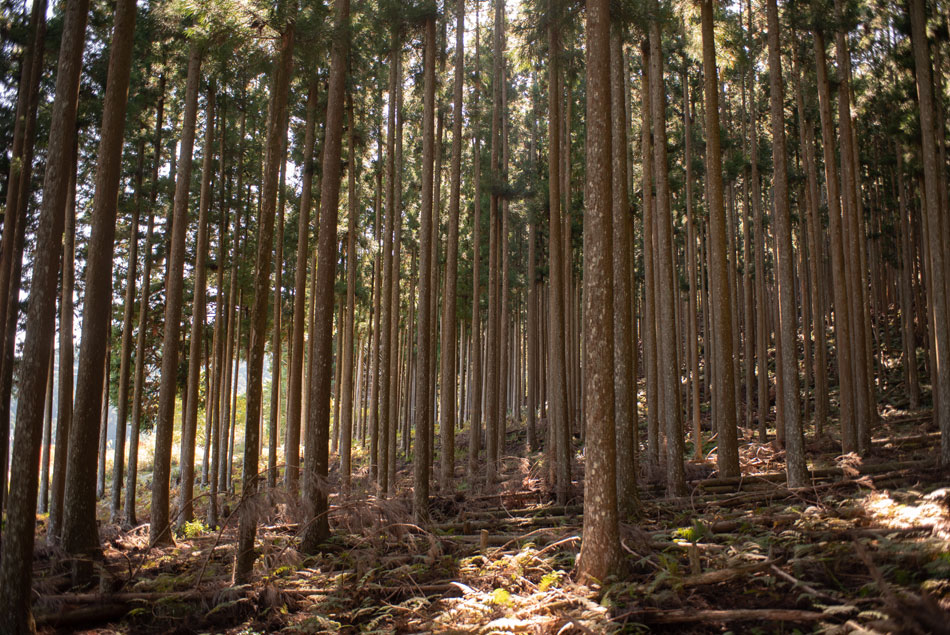
60% woods used in Japan are imported
Japan is a country that two thirds of the land area is forest. However, 60% of domestic demands of woods depend on imports and self-sufficiency is 37.8%, according to survey by Forestry Agency in 2019. We have lots of wood all over Japan, but imported woods are used in houses and interiors.
It remains unchanged though situation has been improved because cedar and cy press planted after the war are in felling time. The reason is that import woods with high quality become cheaper affected by a higher yen. It takes a lot of managing trees and price competition is against Japanese woods because of high labor costs in Japan.
System of planting and growing trees
It might make a bad impression for environment to cut down trees absorbing CO2. The fact is that cutting and using trees can promote reforestation through planting and growing new trees. Woods are sustainable resource that can be left for future while there are rounds, sun and water. The important thing is a system which grows trees not just to plant.
In Yoshino area, Nara prefecture, which is famous for Yoshino cedar, a forestry system as described above has been kept for 500 years, but due to an influx of import woods, situation gets difficult. Even in this famous production area, it gets harder to keep the forestry system with long history.
After neglecting forest without maintenance, branches are crowded and sunlight can’t get to roots. It makes roots impoverished and trees get weak. In Chiba prefecture, at the time of Typhoon 15th in September 2019, a cedar tree fell to hit electric wire and telegraph poles, then it caused delay of restoration. There were many trees left without maintenance and they got sick by groove corrosion to be broken in the middle of a trunk.
Japan has a lot of natural disasters. Typhoon, heavy rain, snow storm and earthquake occur every year. It is important to maintain properly to enhance water holding power of forest and grow healthy trees, especially in a sense of disaster prevention.
SDGs; Sustainable development goals
Among the 17 goals of SDGs, it is said that forest function makes use of achievement for 14 goals.
Tanihata uses woods coming from the nearest area as possible. Moreover, publicity and usages of domestic woods like cedar and cypress is promoted.
Toward the sustainable future, we will proudly keep making “100% made in Japan” product to all of our customers.
